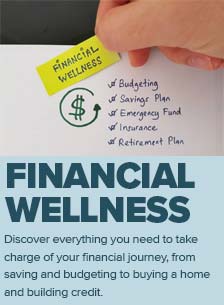Inventory is finally on the rise but demand is slowing due to buyer fatigue.
The following article includes views from Reports on Housing by Steven Thomas, economics expert and experienced real estate executive, and is not a reflection of the opinions, views, or predictions of Nuvision and its representatives.
For months, active inventory has been dropping to record lows, exacerbating buyers as demand rose and competition made houses difficult to find. But over the past two weeks, things have started to shift. Inventory rose for the first time since October of 2020, increasing from 2,240 to 2,384 homes.
Inventory saw its largest rise since May of last year.
During April, 144 homes were added to the market. This is a significant leap forward. After so long without increases, it is also a welcome relief to many buyers struggling to find a home.
Despite this rise, inventory is still below the 5-year average from 2015 to 2019. During March, inventory was 5% less than the 5-year average, at 179 fewer new homes. This trend has been going since the beginning of the year. Inventory during the first quarter of 2021 was 4% less than the 5-year average, with 400 fewer homes.
The increases over the last few weeks likely foreshadow larger increases coming soon, as inventory is anticipated to continue rising until its annual peak. The peak typically occurs during July or August, but it could be later this year given the predicted rise in interest rates. Rates currently sit at 3% and are expected to rise to 3.75% by the end of the year. Higher rates cause sellers who overprice to remain on the market for a longer period, which pushes the peak out later.
While inventory has risen, demand has dropped.
After months of unrelenting demand and no new inventory to keep up, it might have made sense for demand to continue increasing with the addition of new homes to the market. The opposite occurred this month.
Over the past two weeks, demand dropped 3%, from 3,162 to 3,070 pending sales. This drop is likely the fruit of a crazy environment that has left buyers without a break. Hearing about escalating prices, intense competition, and record low Expected Market Times, buyers are hesitant to jump in. Those that have been in the market and have lost out on multiple offers may also be discouraged.
For context, two-thirds of sales closed during March sold above the list price. Seeing values continue to rise as your offers are continually turned down dissuade a person from staying in the market.
While understandable given the circumstances, this drop is not typical of the spring market, especially since it was accompanied by a simultaneous drop in interest rates. According to Freddie Mac’s Primary Mortgage Market Survey®, rates dropped from 3.18% to 3.04% between April 1st and 15th. Even with the drop in interest rates, demand still dropped.
This lull in demand will give the market a chance to balance itself out. The Hot Seller’s Market will remain, but the extreme numbers might be dialed down to become more in line with typical seasonal trends.
What to know: Buying and selling in today’s market
For now, the housing market remains a very hot Seller’s market, with an Expected Market Time of just 23 days. Similar to last month, home values are on the rise, sellers get to call the shots in negotiation, and multiple offers are the norm.
- If you are a buyer… Don’t be discouraged by the lack of inventory. The state of the market can be frustrating, but waiting for more options isn’t the solution. The best thing to do is push through. Mortgage rates and home values are both on the rise, meaning buyers who wait will end up paying more in their monthly payments years down the road.
- If you are a seller…Now is the time to get ahead by accurately pricing your home from the start. Your goal is to attract as many buyers as possible, and overpricing kills your odds. The more potential buyers you have, the more offers you’ll get. More offers create a bidding war where your home value will rise. Even after the market slows down and interest rates rise, overpricing is not a good strategy and will extend your time on the market without receiving any offers.




